Used in this procedure:
Lipavi C20 container, N20 polycarbonate rack. Lipavi C20L lid.

Above: whole brisket, approximately 14 lbs/6 Kg.
Below: a 3 lb/1.5 Kg section of the flat–very lean. Note the coarse grain–this is the toughest section of the brisket, and the lowest in moisture–a challenge even for experts.
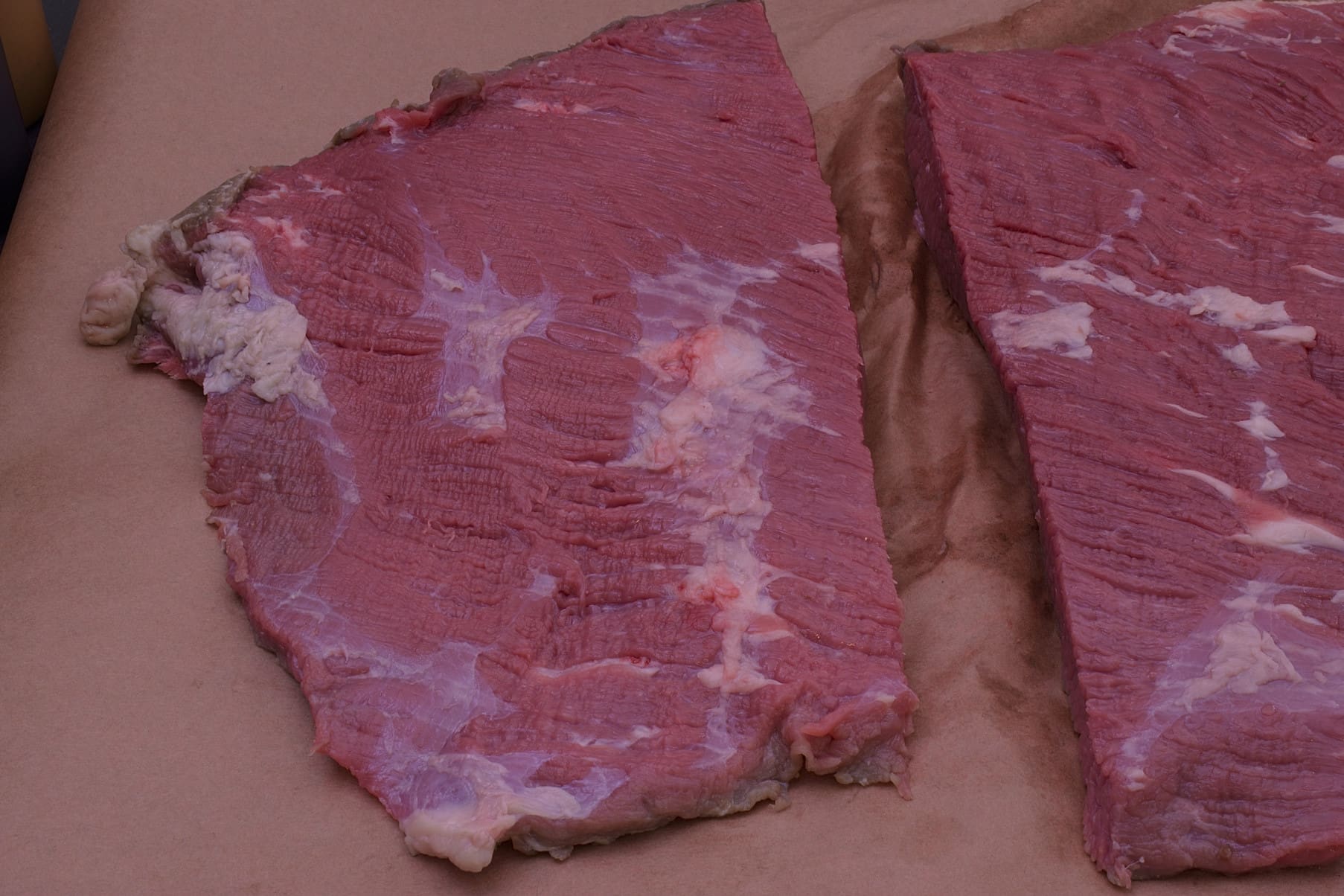
Serves 4-6
Level of difficulty: 2.75
Procedure:
Preheat the water in your sous vide bath to 140 F/60 C.
Processing
Vacuum seal the brisket flat section in heat rated plastic bags and process for 48 hours to pasteurize and fully tenderize. Cold shock the sealed package in iced water until it achieves 70 F/21 C. Refrigerate at 40 F/4 C. As long as the seal is not broken, the roast can remain safely refrigerated in this state for at least two weeks.

Remove the package from the refrigerator. Submerge the sealed package in hot tap water 110 F/43 C (or an operating sous vide bath at any temperature) until the gel/juices melt. Remove the roast from the bag and harvest the juices into a microwaveable container (or small sauce pan).
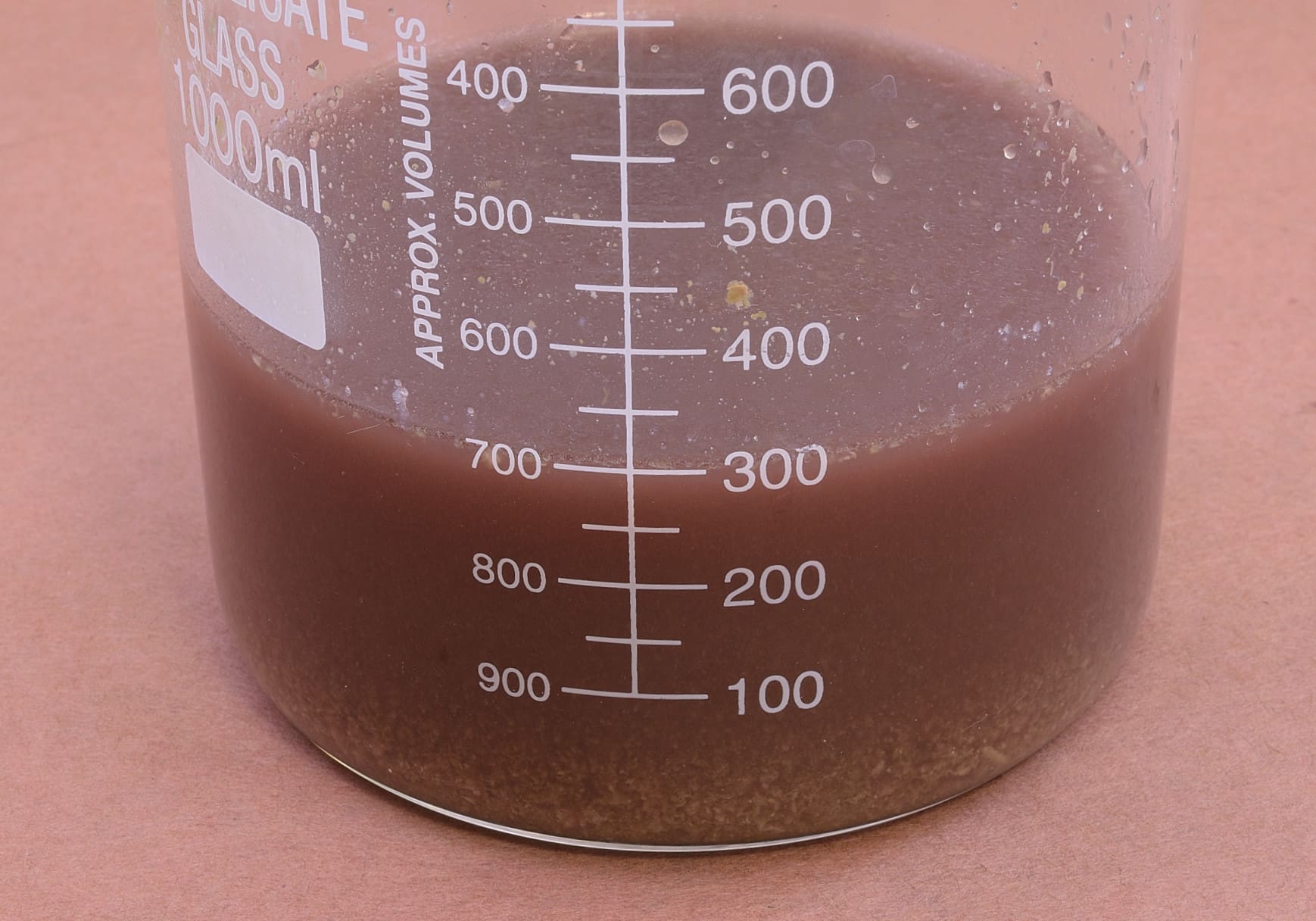
Bring the juices to a full boil–approximately 45 seconds in a microwave oven. Take care to not allow the liquid to boil over. Set aside.
Place a small colander or kitchen strainer above a container and line with moistened paper towels.
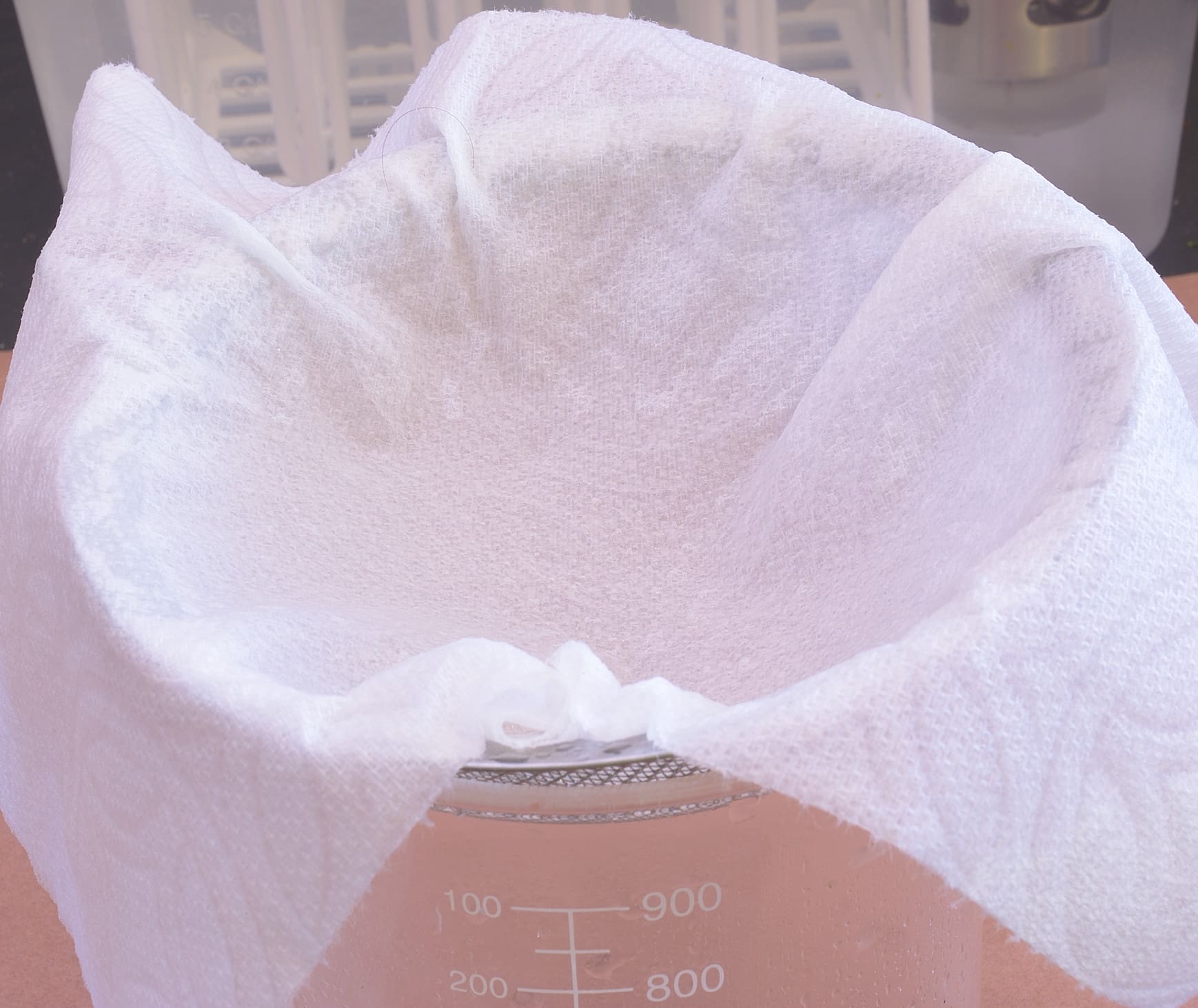
Moistening the paper towels prevents the juices from clinging to the fabric.
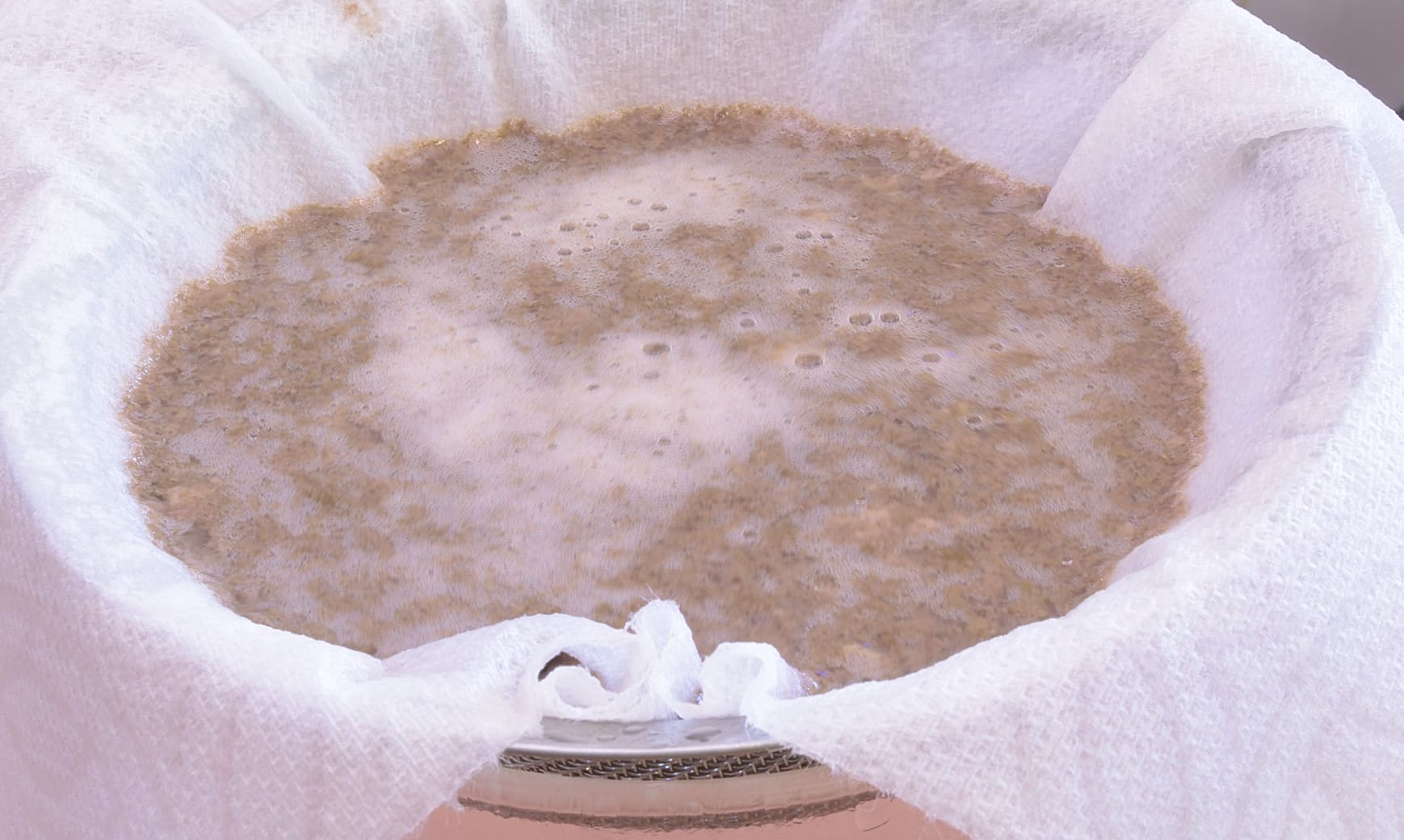
Pour the juices into the moistened paper towels.
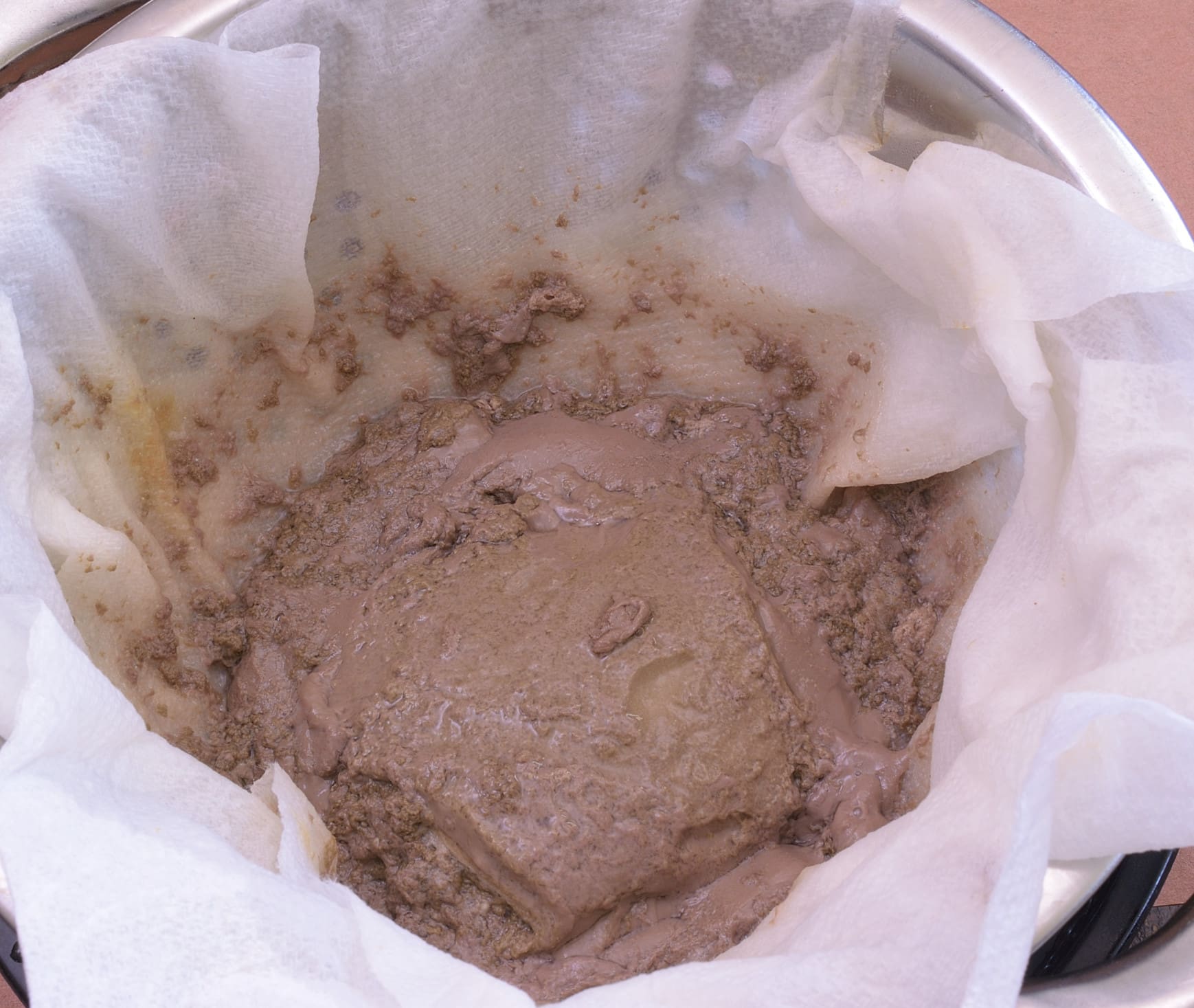
The fabric will capture the denatured myoglobin and albumins, which can have an “off,” sulfurous aroma and flavor. Discard the paper towels and their contents.
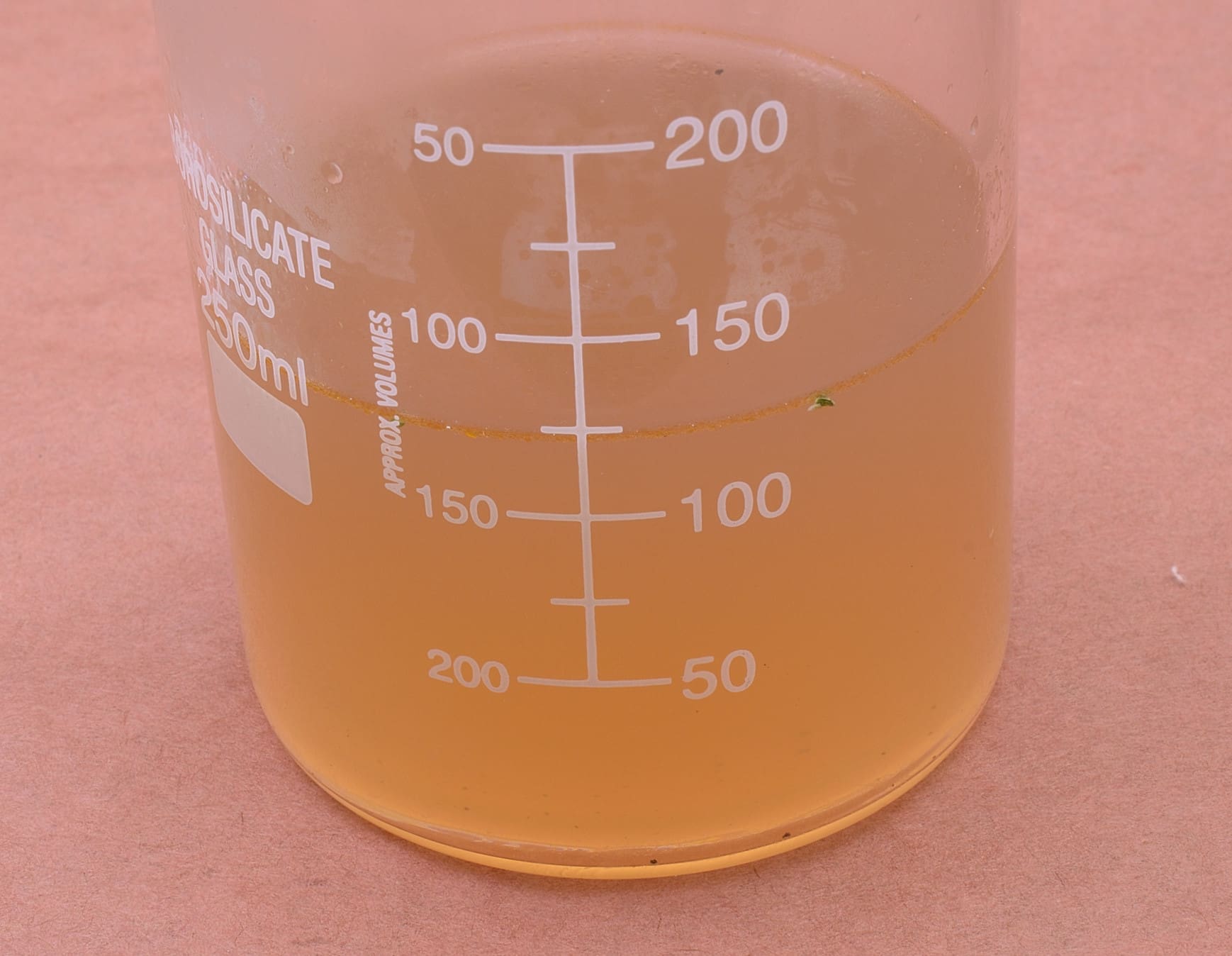
The resultant liquid is the equivalent of a clarified, heavily reduced consommé and will be rich in flavor. Caution: if salt is introduced into the pouch with the protein during processing, this liquid may be quite salty.
Combine the consommé half and half with your barbecue sauce of choice to make a light basting sauce. Set aside for the moment.
Preheat oven (or smoker) to 350 F/176 C.
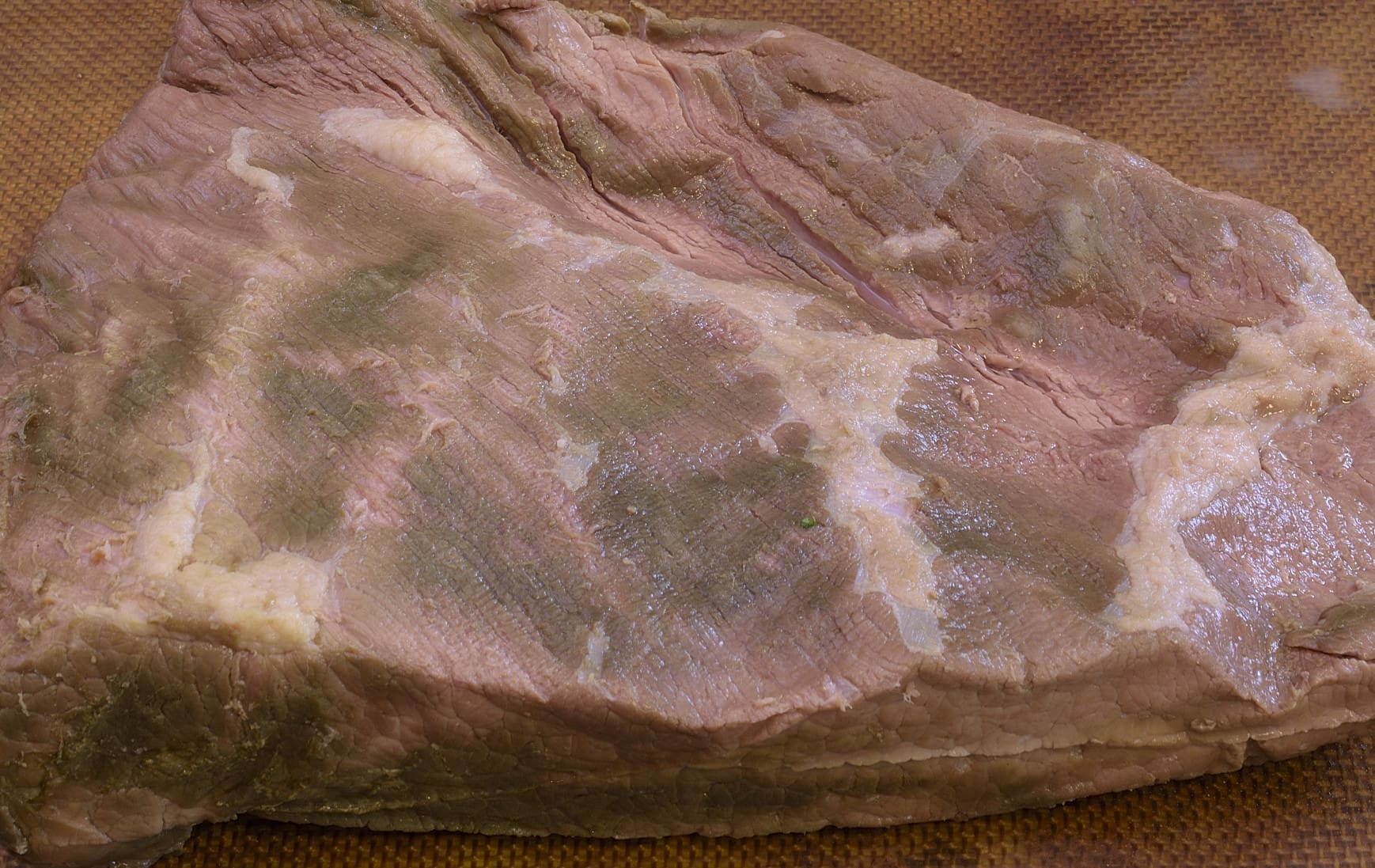
Put the roast on a sheet pan lined with a silicone mat or parchment. Pat dry with paper towels.
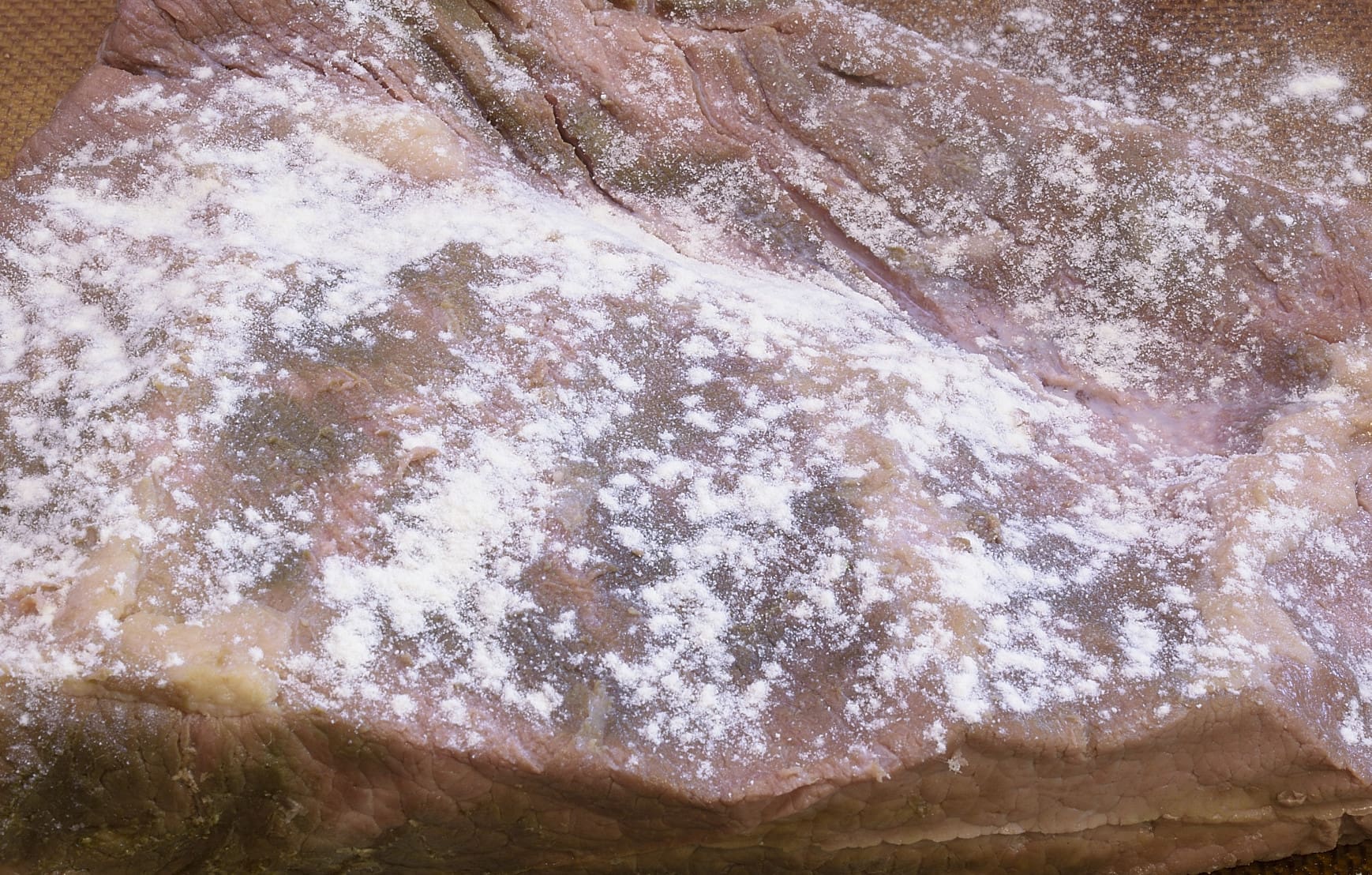
Use a dredge/shaker (or sifter) to dust with the powdered egg white (or paint with beaten liquid egg whites). This will create a sticky surface for seasonings to cling to. For people who are allergic to egg products, powdered buttermilk or even flour can be substituted. Egg whites become firm when exposed to heat, but buttermilk does NOT. Exposing a buttermilk based crust to direct heat from the surface of a pan tends to remove the coating as opposed to securing it.
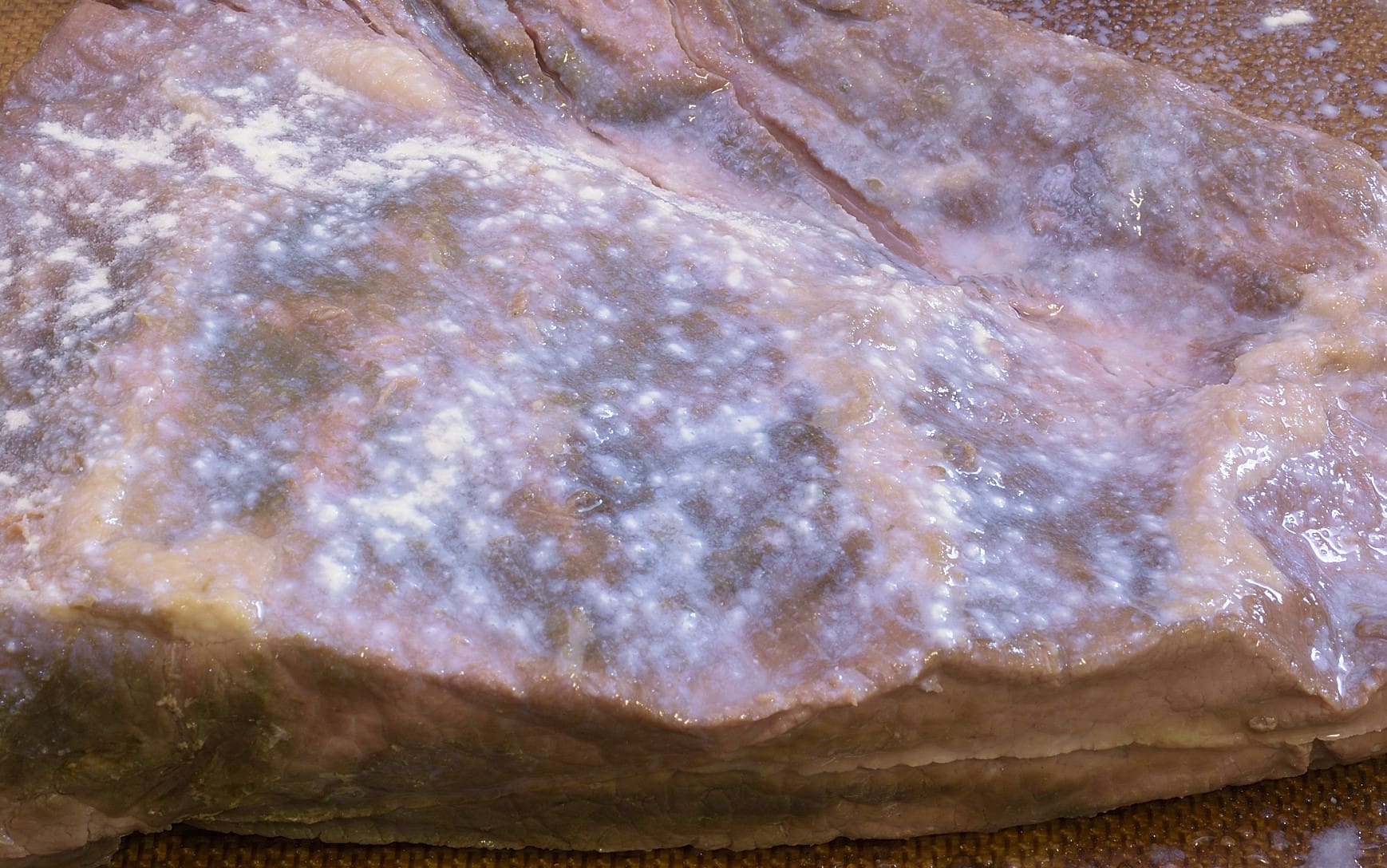
Mist the surface with a spray bottle to dissolve the egg whites.
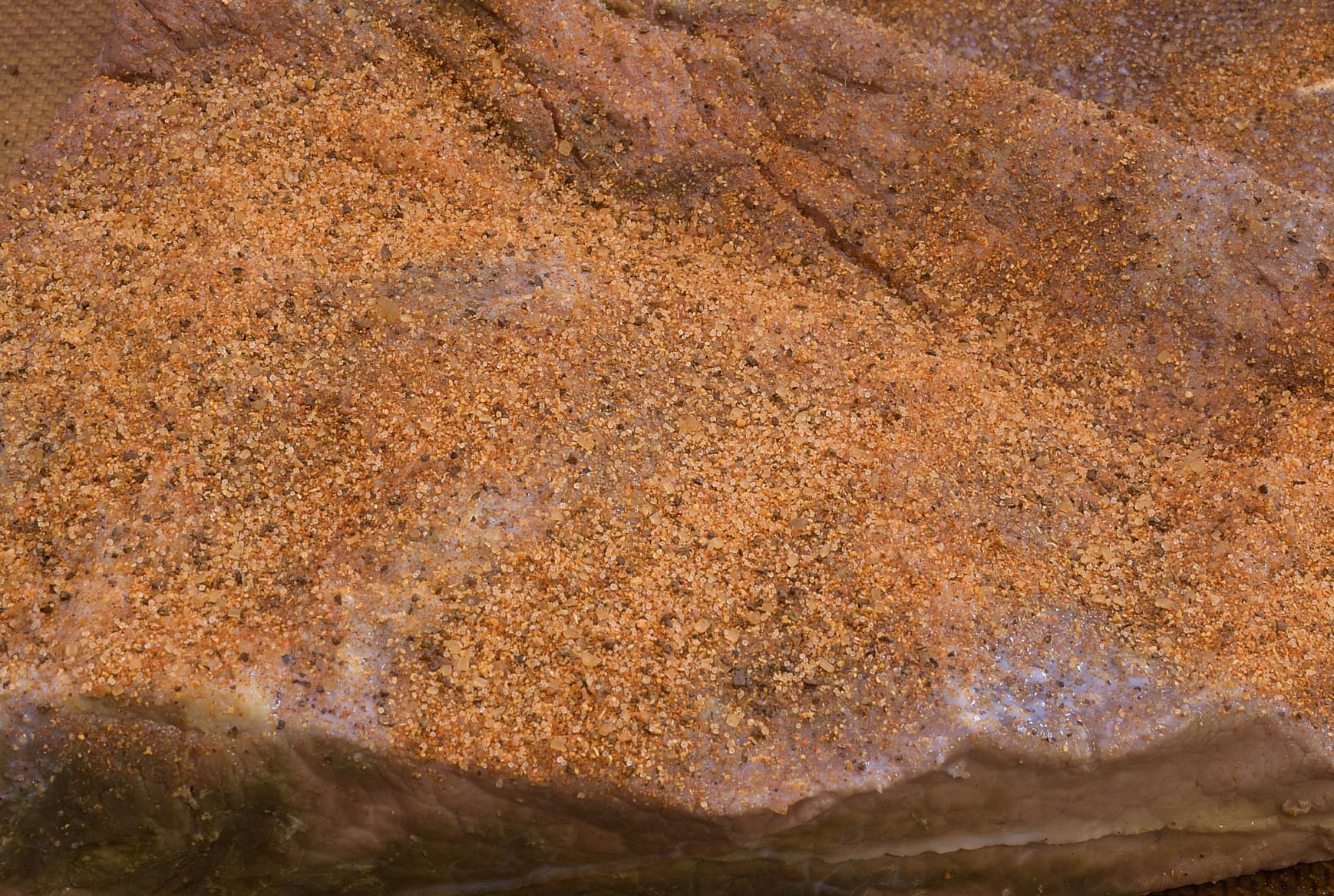
Sprinkle with your favorite rub/seasoning or use one of ours linked HERE. Turn the roast over and repeat the egg white/mist/seasoning process.
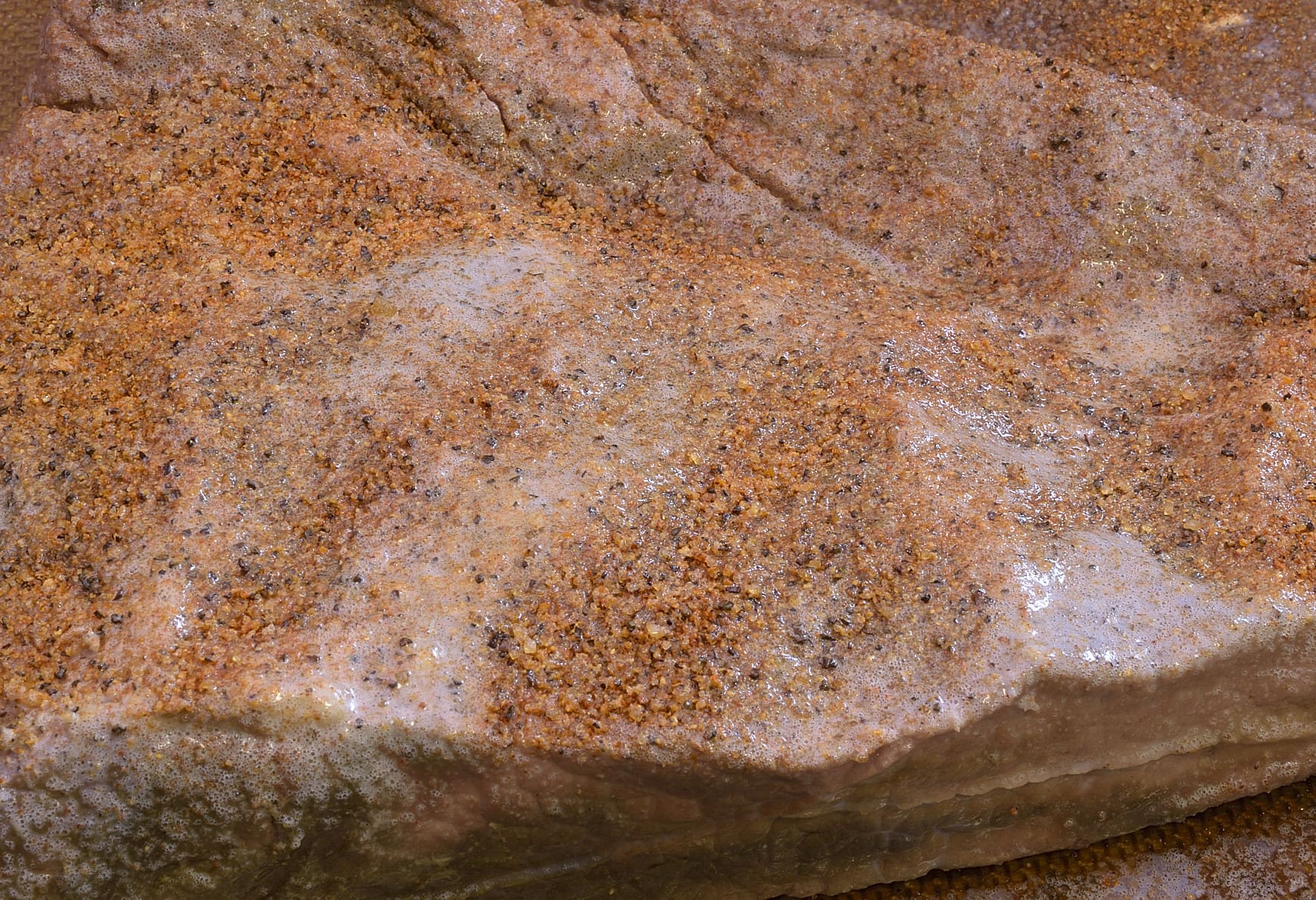
Spray or drizzle lightly with vegetable oil. Stage brisket flat into oven and roast for one hour. Turn over and roast for another hour, drizzling every 15 minutes with the basting sauce.
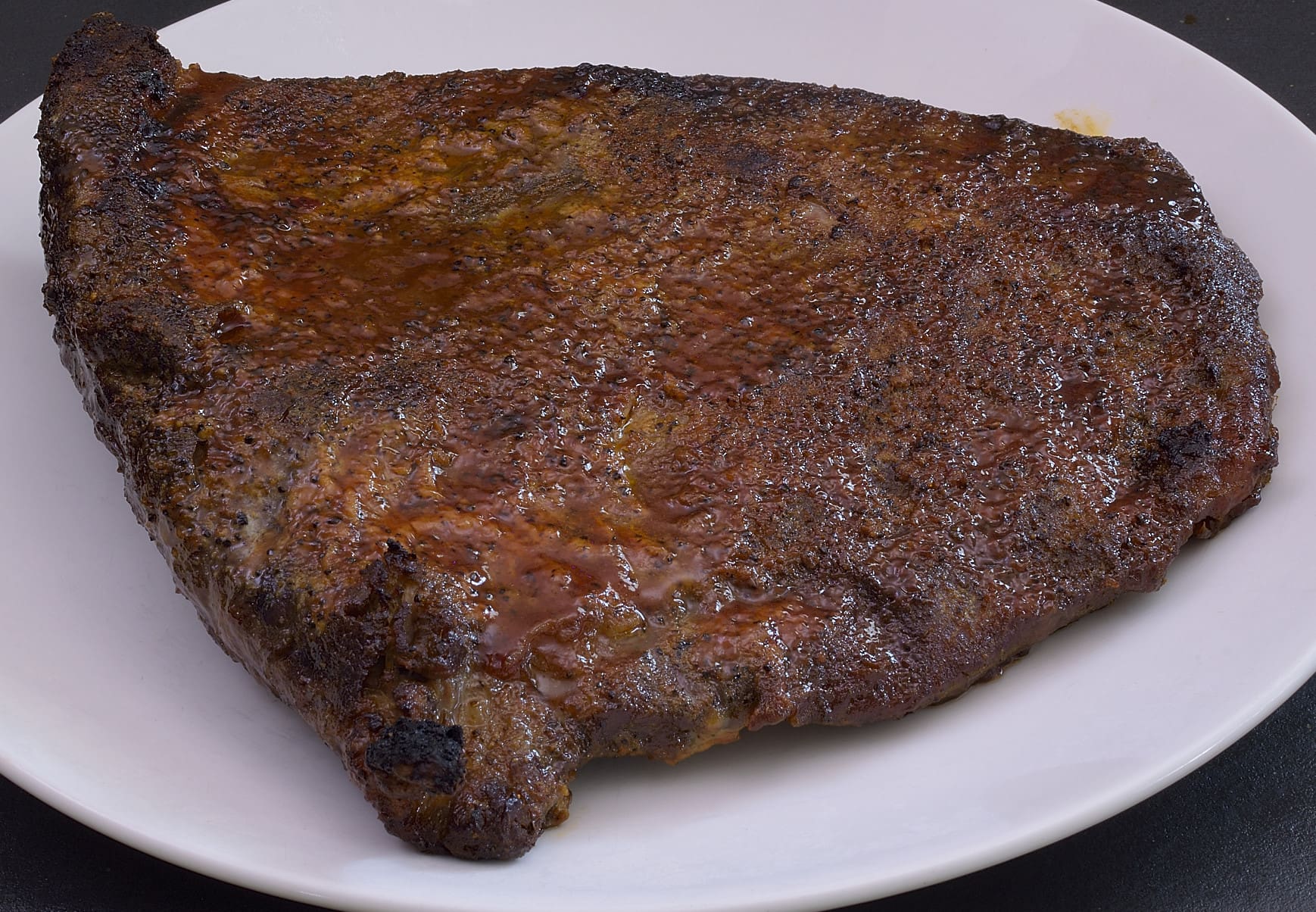
Remove from the oven when the internal temperature reaches at least 130 F/54 C–this is generally considered to be “mouth hot.”
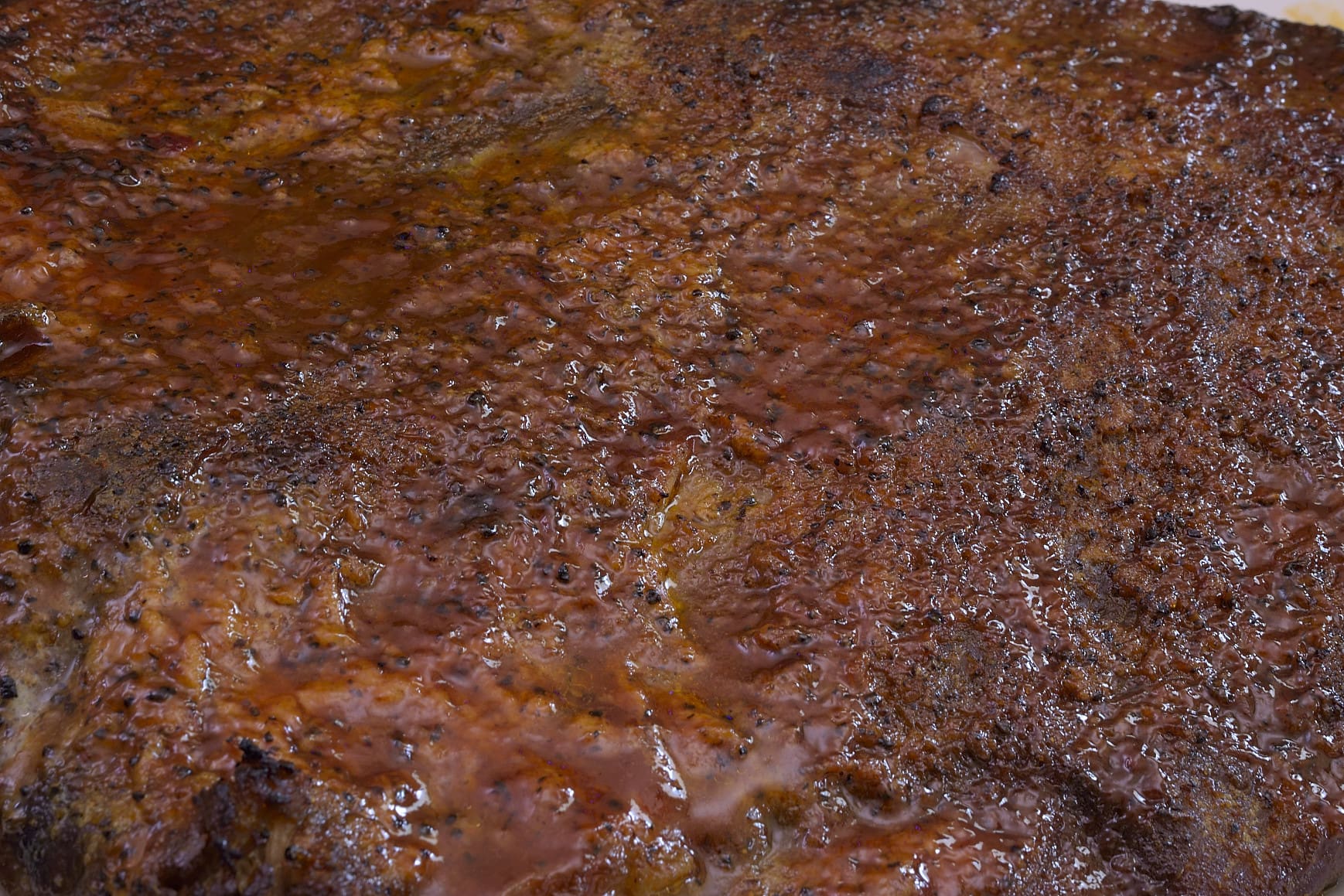
Service
There are several options that are suitable for this otherwise somewhat troublesome section of the brisket. First, a simple, “traditional” presentation.
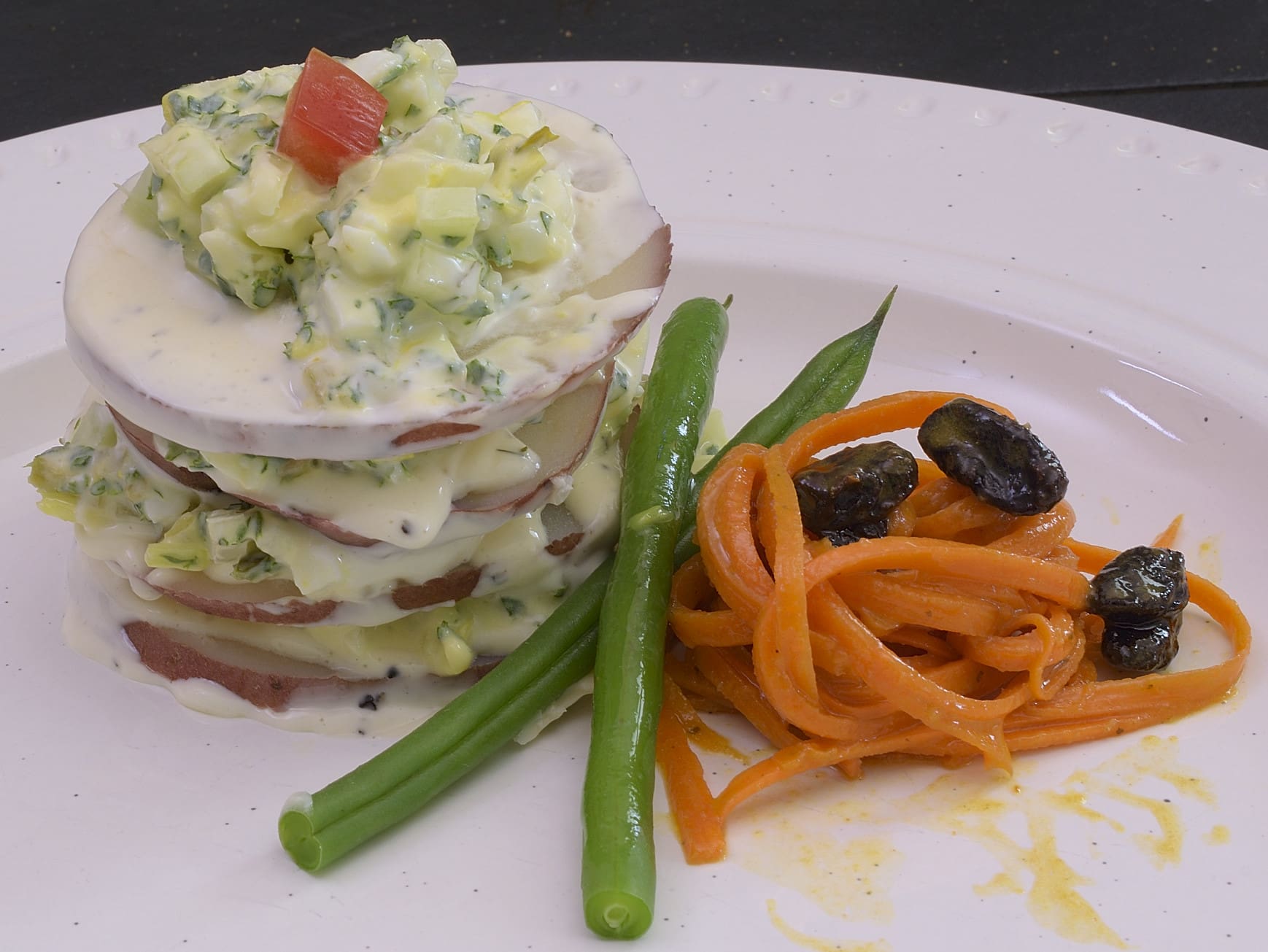
Arrange your side dishes on the plate. Slice the brisket thinly against the grain and on the bias.
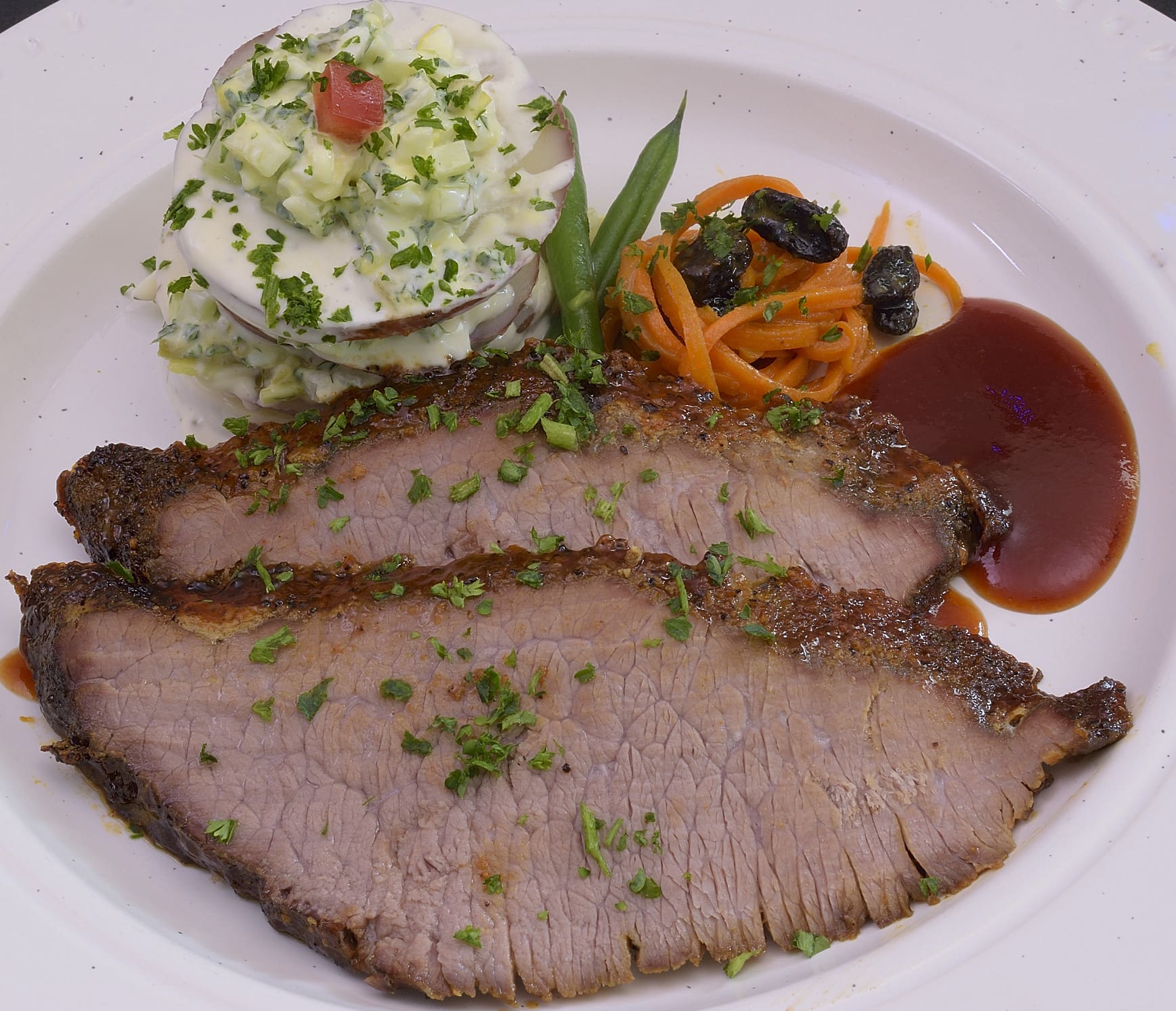
Create a small pool of your barbecue sauce on the side.
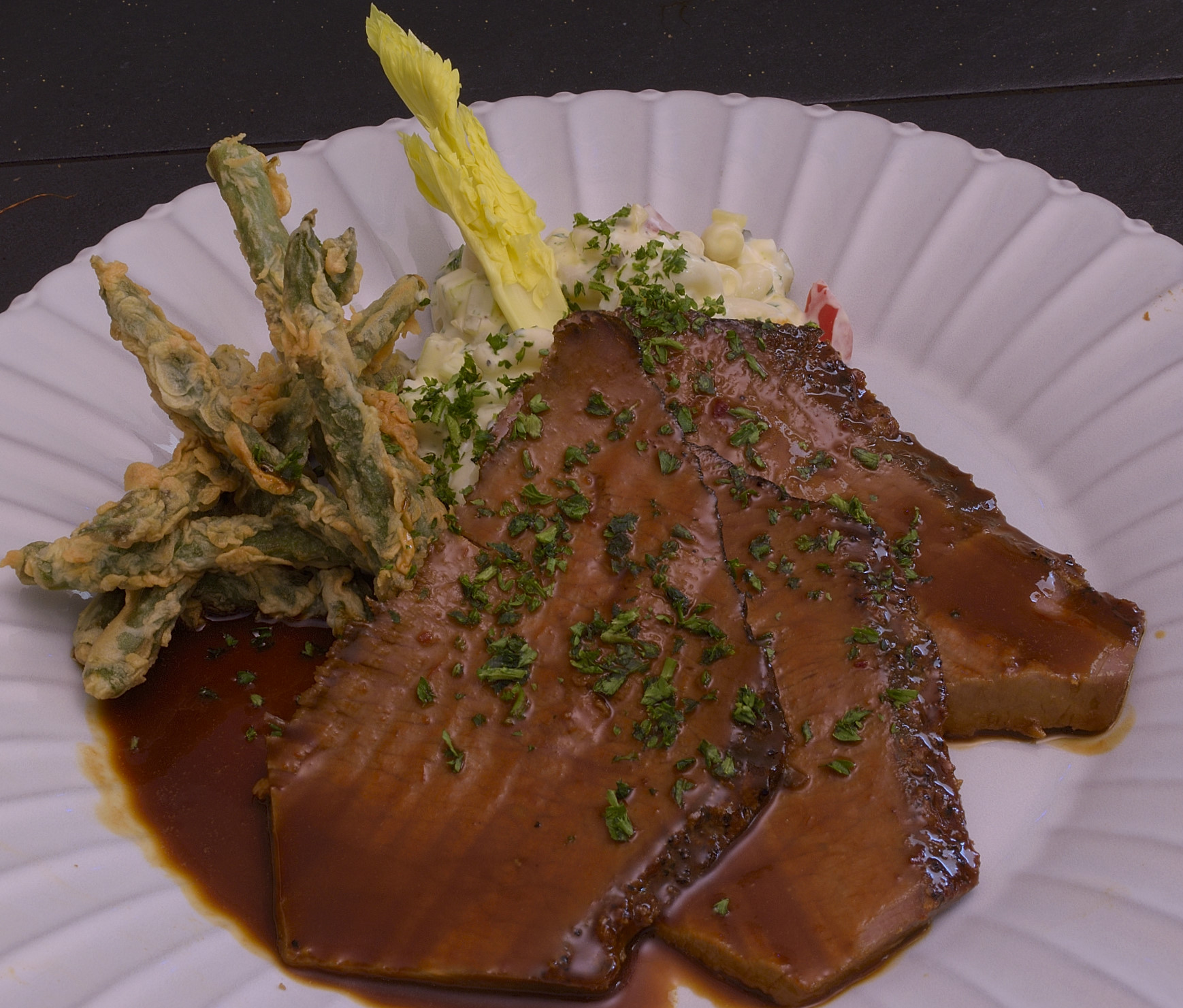
This particular section of the brisket is the lowest in moisture, so many aficionados prefer to “dunk” before plating. Served with tempura battered green beans and old fashioned macaroni salad.
For all of its challenges, the brisket flat may be best suited to create the “pulled” beef effect. The best method for separating the fibers is to steam (or boil) slices or chunks of the meat until the fibers can be pulled apart with two forks or the paddle attachment on a Kitchenaid type mixer.
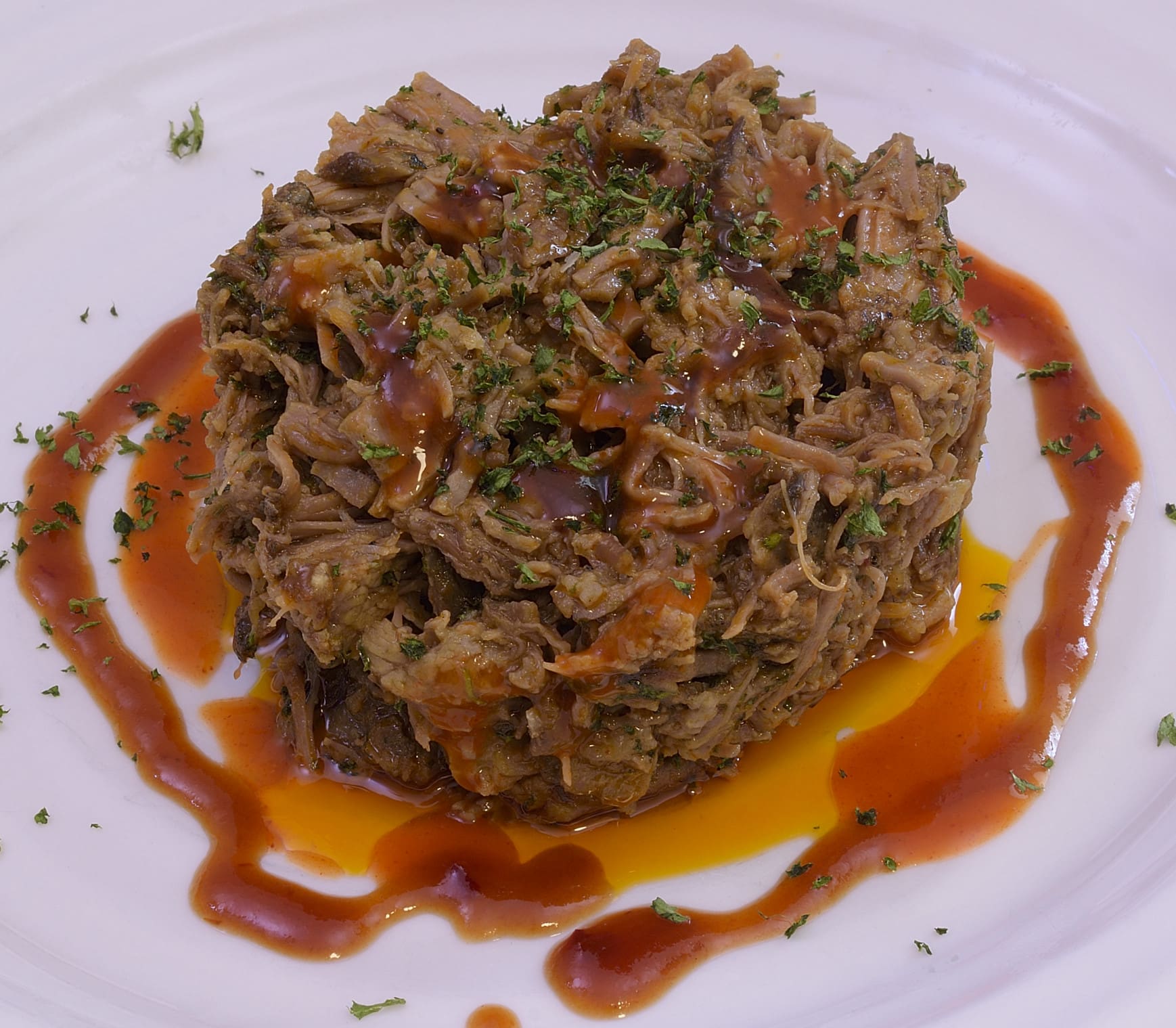
Then it is simply a matter of combining the shredded meat with Tabasco (very hot), your favorite “wing” sauce, barbecue sauce, or a combination of some or all of those. Melt a pat or two of butter into the mixture to create the shiny appearance and velvety texture.
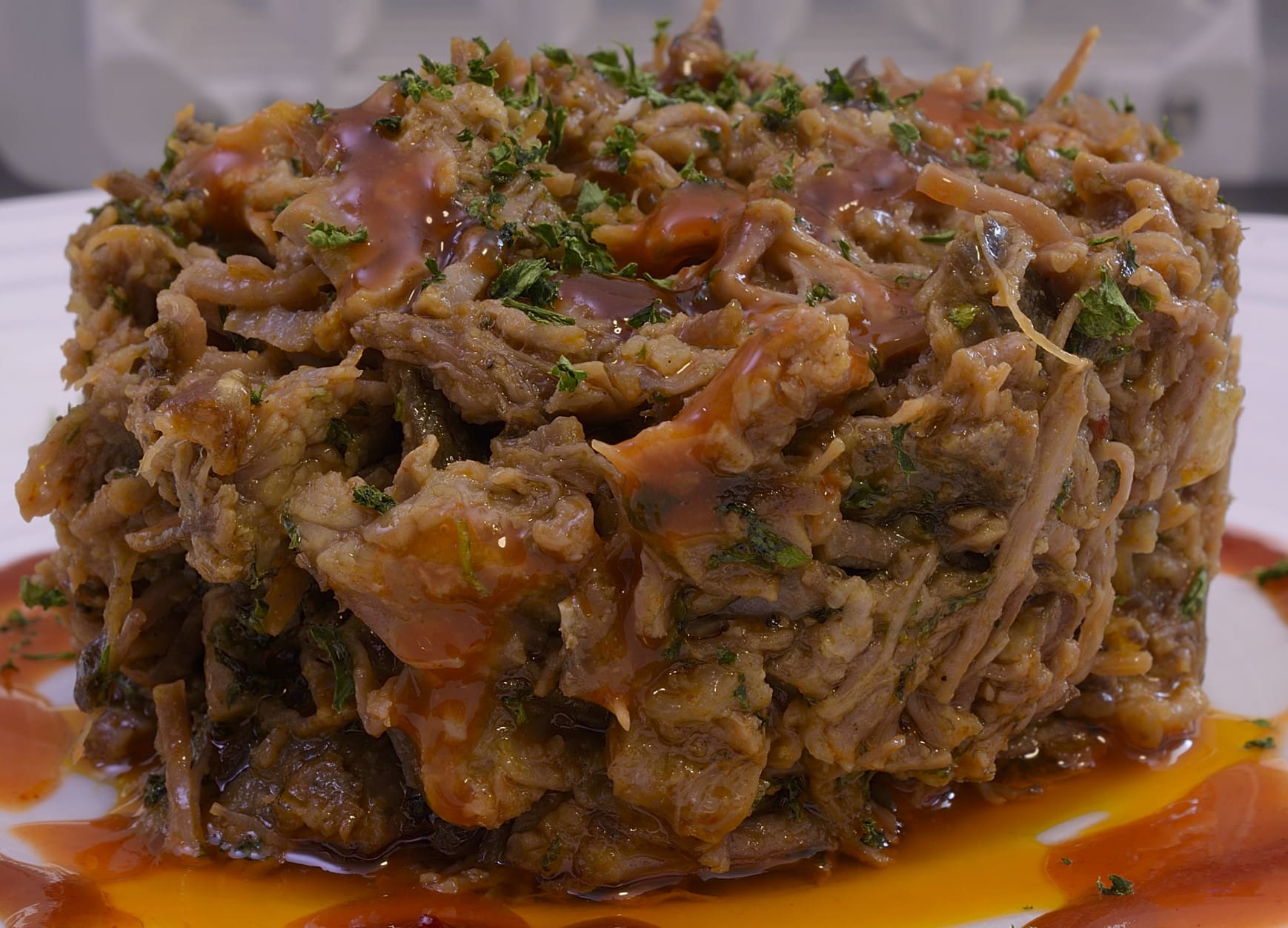
Click on my name below to visit our Facebook sous vide group, Sous Vide Resources!
Norm
Addendum
Just a few pics to elaborate on some of the various components…
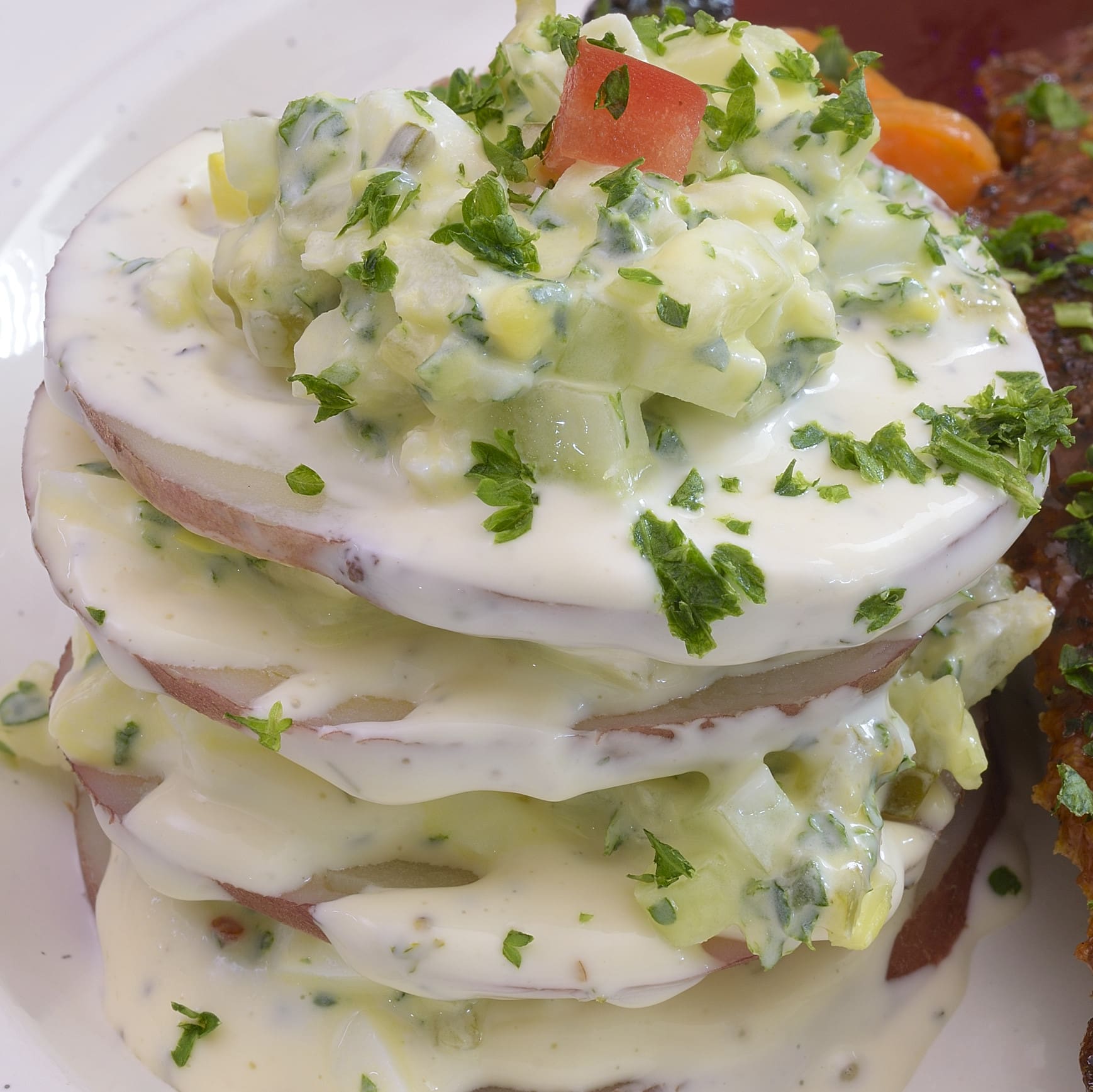
Simpler than it appears–slice the raw potatoes and steam or simmer until tender–use a slotted spoon to lift them onto paper towels to cool. Assemble all the other standard ingredients–hard boiled eggs, celery, onion, pickle relish, mayonnaise, etc. and of course chopped parsley to make the layers. I drizzled the potatoes themselves with a little Ranch dressing to create the visual effect.
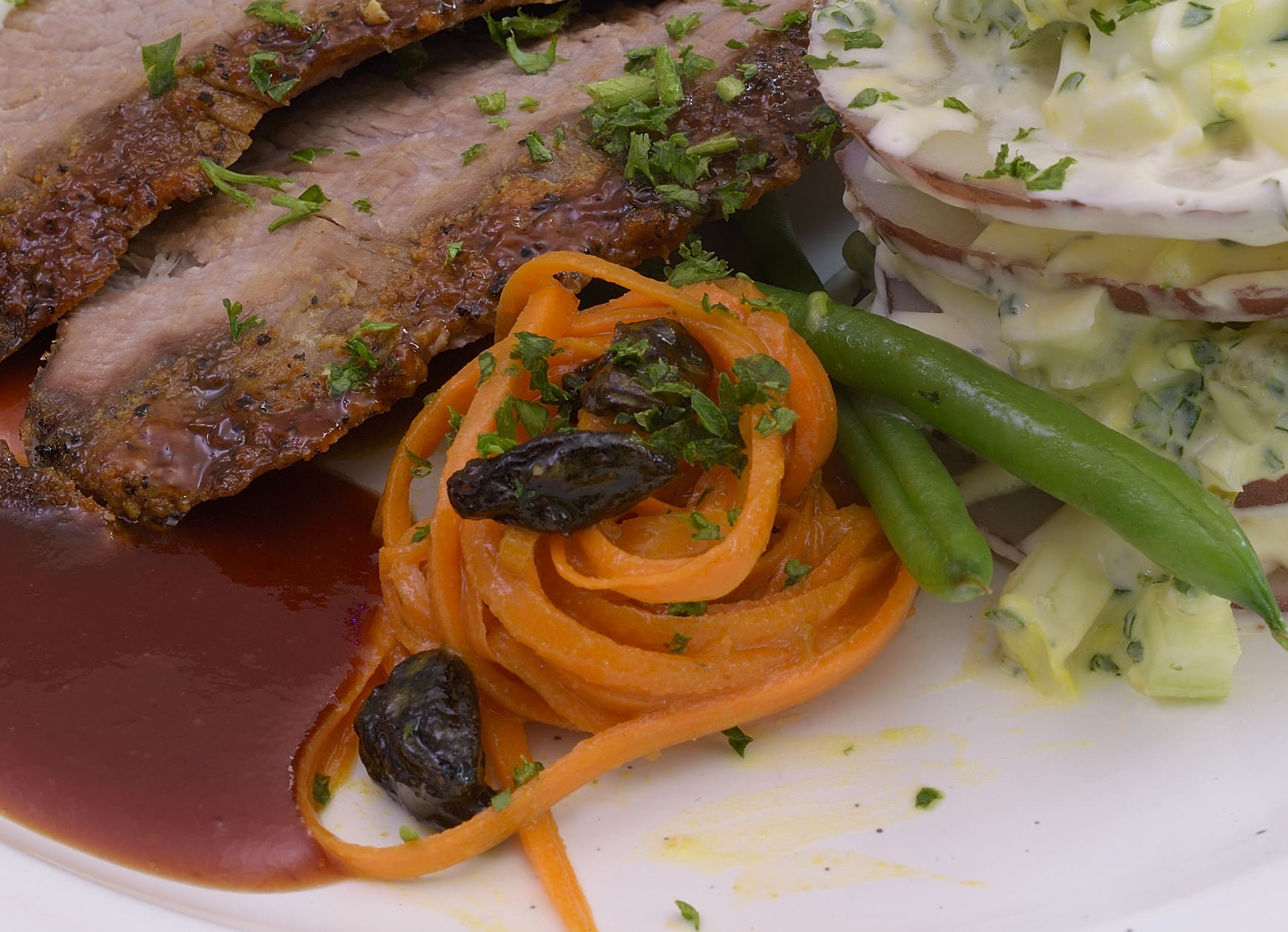
I use a Swiss peeler (or mandolin, carefully) to cut the thin strips of carrots. Let them sit in an acidic dressing for one hour to soften and they can then be coiled.
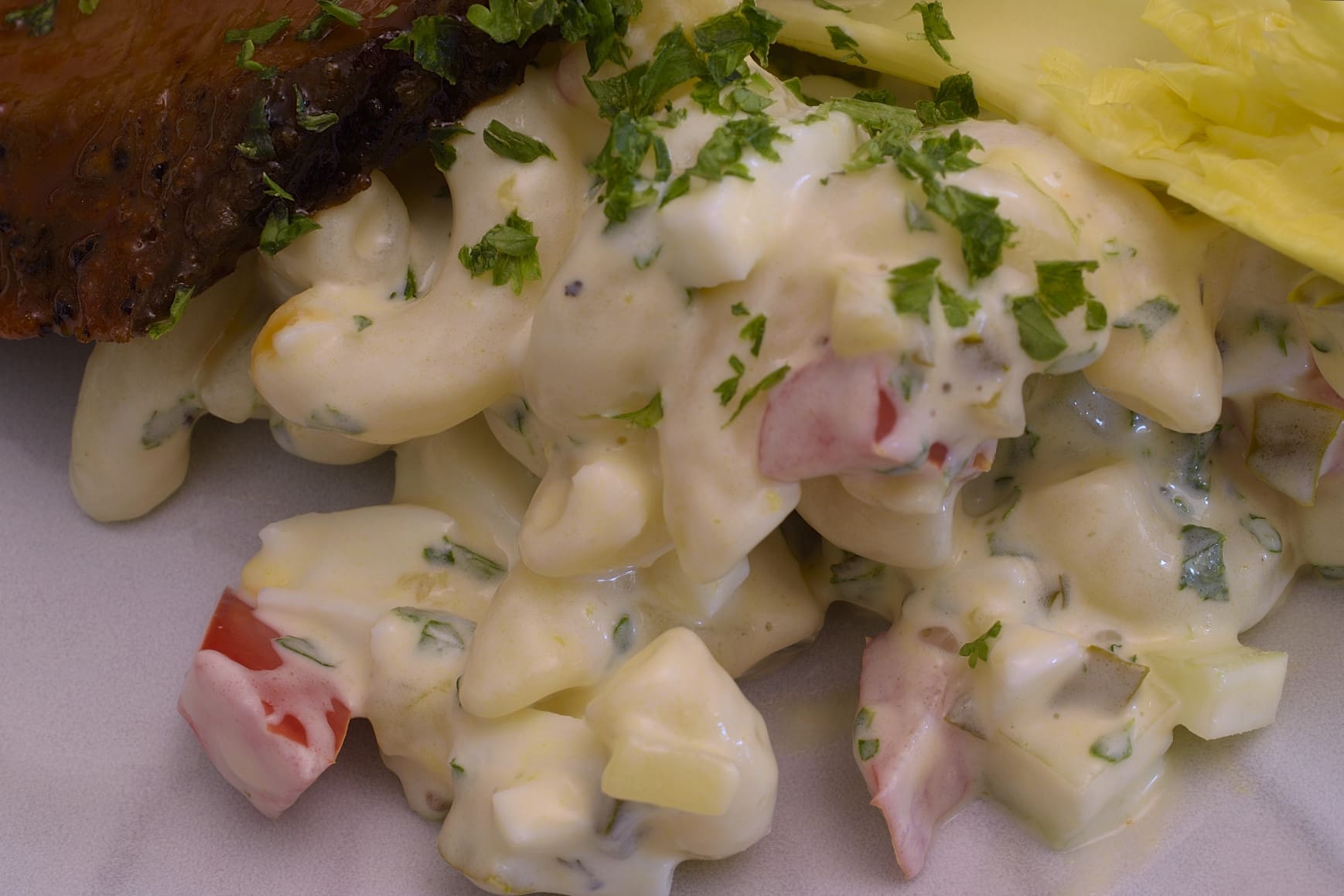
For my money, the only difference between potato salad and macaroni salad is the potatoes and the macaroni.
There are several keys to successful tempura. Make small amounts at first so that you can adjust thickness, etc. in real time. Make the batter thick enough so that when you lift one bean out, it remains completely covered even as it drains. Drop the battered bean into a generous amount of flour and give it a few seconds to cling–this makes them easier to handle and also encourages full coverage.
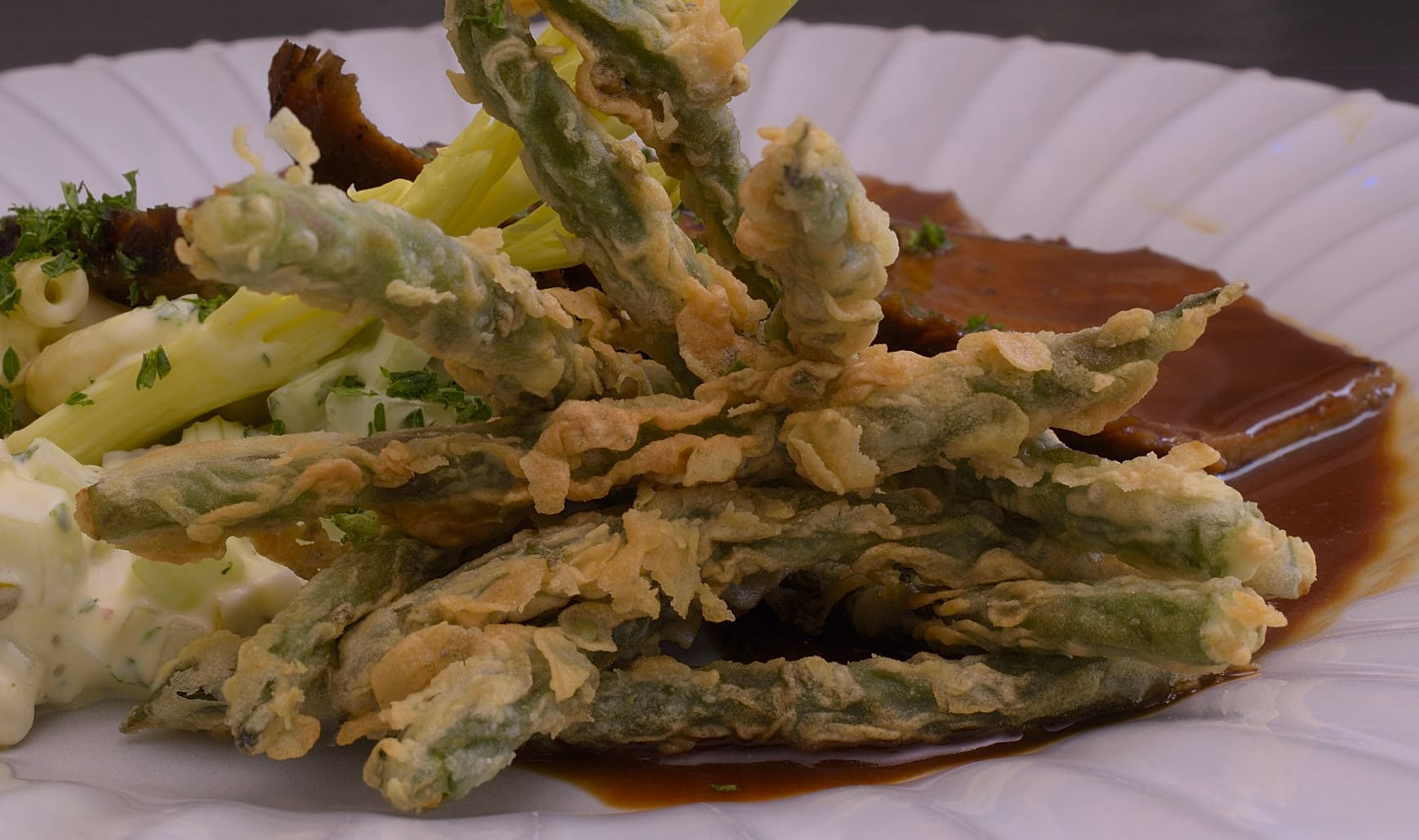
Lower the beans into the 300 F/148 C oil one bean at a time–prod it with a fork and in a few seconds it will float. Then add another one. This keeps the beans from sticking together.
Have fun!
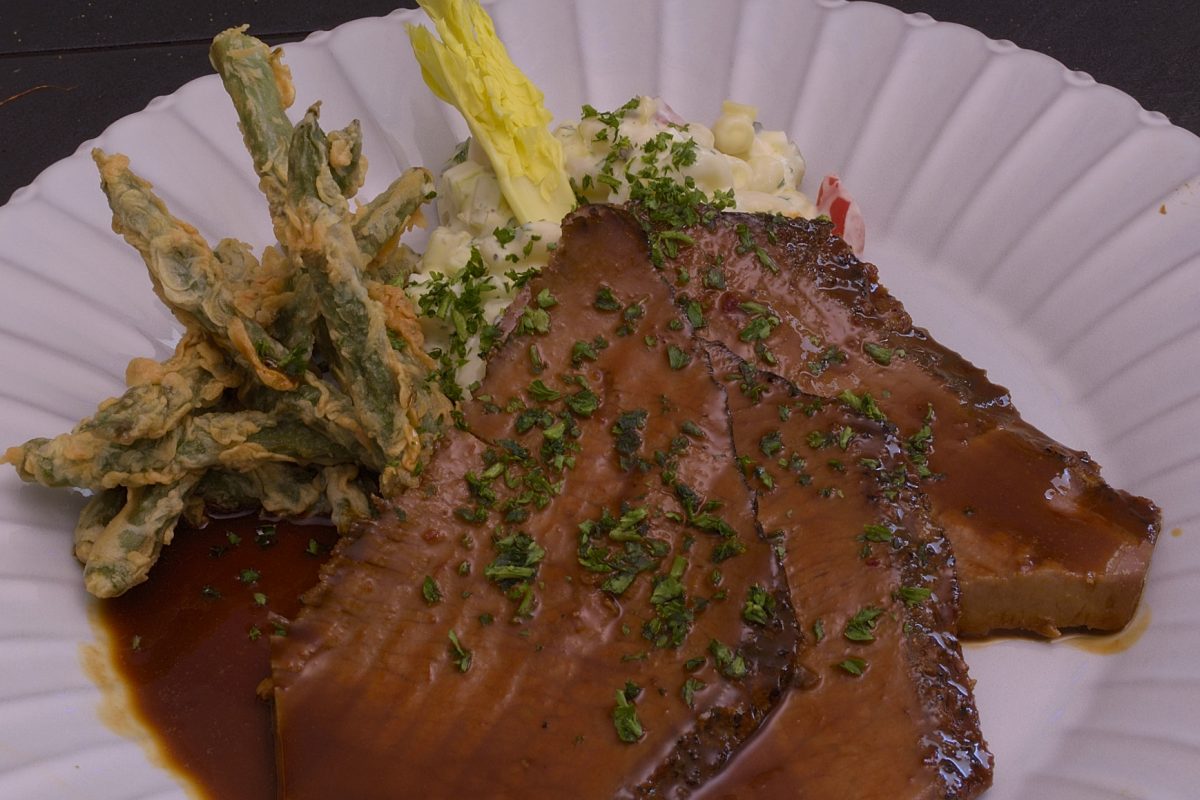
1